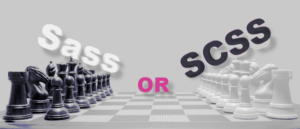The Web Designer’s Guide to Image Copyrights
Key Takeaways
- Web designers should ensure they have the right to use images on their sites, as using copyrighted images without permission can lead to legal issues and damage professional reputations. This includes educating clients on proper image use.
- There are two main types of licensing for professional stock photography: Rights Managed, where usage is controlled and typically licensed for a fee based on usage and duration, and Royalty Free, where you pay a one-time fee to use the image as often as you like, with some restrictions.
- Always assume an image is copyrighted and requires permission for use. Consider using copyright-free image sources or hiring a professional photographer to create original images. Websites like Unsplash, Pexels, and Pixabay offer high-quality, copyright-free images.
Photographers—even amateurs—can get touchy if they think you’ve used their image without permission. About a year ago, I used a Flickr image in a blog post. Although I credited the photographer at the end of the article, the blog summary page displaying the image thumbnail did not have the credit line.
When the photographer saw I’d used her image, she didn’t bother to check the actual post to see if I’d credited her; instead, she sent me a snarky email, then posted a comment on her Flickr page, telling everyone how I’d “stolen” the image.
Once I showed her where I’d placed the attribution, it was all well and good. Misunderstanding avoided.
The ability to self-publish has led to the mistaken notion that, if it appears in a Google image search, it’s okay to use. As web professionals, we ought to know better. Coming from a graphic arts background, I already understood how copyrights worked long before I started designing websites.
Unfortunately, that’s not always the case. It’s easy to get into web design with little or no budget; and the temptation to use images from the Internet, rather than paying for stock photography, can be … well, tempting.
What’s more, easy-to-use blogging platforms like Tumblr and WordPress means people with no understanding of copyright laws are right-clicking and “Save(ing) Image As…” each and every day. Many of us build WordPress sites for our clients; it’s important we advise them on the proper use of images before giving them the keys to the back-end.
As a designer, placing copyrighted images on a site puts your client in an awkward position. After all, who do you suppose the owner of that image is going to contact? Even if a simple “cease and desist” resolves the matter, it’s still downright embarrassing. If you don’t have access to a stock library, a simple solution is to build the cost of a few stock images into the price of the site, then charge the client extra if he needs more.
When it comes to professional stock photography, there are two traditional licensing models: Rights Managed and Royalty Free.
Rights Managed
Rights Managed means the right to use the image is managed and controlled—usually by a stock agency. Images are typically licensed for a set fee based on where it’s being used, and for how long.
Rights managed images are advantageous when the advertiser wants to be sure that the image they’ve selected is “off-the-market” and not currently being used in any other advertising or—God forbid—by the competition. Paying more for a rights managed image ensures this never happens.
Royalty Free
Royalty free doesn’t mean free to use; it means you don’t pay a royalty payment each time you use the image. When you purchase a royalty free image—either individually or as part of a compilation—you may use it as often as you like, as many times as you like.
There are some usage restrictions (such as placing the image on a tee shirt or template you’ll be reselling), so be sure to check the licensing terms carefully.
The downside of using low-cost, royalty free imagery is the risk of a popular image or the same model appearing many places at once—such as here and here and here and here and here and here, and as well as a well-dressed doctor on a local medical center billboard here in my home town.
If you’ve built more than one website, you probably realize how difficult it is to obtain content from clients. Despite the risks, a typical small business doesn’t have the marketing reach or budget of a Dell or Gateway, so royalty free images remain a cost-effective alternative.
It’s certainly a better option than using images from a Google search. Unless the image you found specifically states terms of use, assume it’s not available to use. Otherwise, you may find yourself on the wrong end of a rights-violation sting. (And if you do, please don’t construe this article as legal advice. I’m not an attorney, so be sure to consult with someone who is, if the need arises.)
With sites like Flickr, you might be wondering why anyone would pay for photography, when you can get no-cost images legally. I’ll be covering that topic next week, so stay tuned.
Frequently Asked Questions on Web Design and Image Copyrights
What is image copyright and why is it important in web design?
Image copyright refers to the legal rights that creators have over their original works, which include photographs. In web design, using copyrighted images without permission can lead to legal issues, including lawsuits and fines. It’s crucial to respect image copyrights to maintain professional integrity, avoid legal complications, and support the work of photographers and graphic artists.
How can I legally use copyrighted images on my website?
There are several ways to legally use copyrighted images. You can obtain permission directly from the copyright owner, usually through a license agreement. Alternatively, you can use images from stock photo websites that offer licenses for commercial use. Some websites provide royalty-free images, which means you pay a one-time fee to use the image without restrictions.
What are some reliable sources for copyright-free images?
Websites like Unsplash, Pexels, and Pixabay offer a vast collection of high-quality, copyright-free images. These platforms provide Creative Commons Zero (CC0) licensed images, which are free to use for personal and commercial purposes without requiring attribution.
What is the difference between royalty-free and rights-managed images?
Royalty-free images are typically sold for a one-time fee and can be used multiple times without paying additional royalties. Rights-managed images, on the other hand, require a licensing fee for each specific use. The cost depends on factors like the duration, location, and size of the audience.
Can I use images found on Google for my website?
Not all images found on Google can be used freely. Many of these images are copyrighted and require permission from the copyright owner. Google does offer a filter for usage rights, which can help you find images labeled for reuse.
What is Creative Commons and how does it work?
Creative Commons is a non-profit organization that provides free, easy-to-use copyright licenses. These licenses allow creators to give permission for others to use their work under certain conditions. There are several types of Creative Commons licenses, each with different restrictions.
How can I protect my own web design images from copyright infringement?
You can protect your images by adding a visible watermark or embedding metadata with copyright information. Registering your images with the U.S. Copyright Office provides the strongest protection, allowing you to sue for damages if your work is infringed.
What are the potential consequences of using copyrighted images without permission?
Using copyrighted images without permission can lead to legal action from the copyright owner. This can result in hefty fines and damage to your professional reputation. In some cases, you may be required to remove the image and cease all use.
What is fair use and how does it apply to web design?
Fair use is a legal doctrine that allows limited use of copyrighted material without permission. However, it’s a complex area of law and doesn’t always apply to web design. Factors like the purpose of use, the nature of the copyrighted work, the amount used, and the effect on the market value of the work are considered.
How can I ensure that I’m respecting image copyrights in my web design projects?
Always assume that an image is copyrighted and requires permission for use. Research the source of the image, check for any licensing information, and when in doubt, ask for permission. Consider using copyright-free image sources or hiring a professional photographer to create original images.
Former owner and partner of web firm Jenesis Technologies, John is currently Director of Digital Strategy at Haines Local Search, a company providing local search marketing solutions to SMBs, including print and Internet Yellow Pages, web design, and local SEO. When not working or spending time with his family, John offers great sales and marketing advice on his blog, Small Business Marketing Sucks. When not working or spending time with his family, John offers great sales and marketing advice on his blog, Small Business Marketing Sucks.
Published in
·Accessibility·Ajax·HTML·JavaScript·Marketing·Patterns & Practices·SEO & SEM·UX·Web·April 9, 2014
Published in
·APIs·Cloud·Development Environment·Miscellaneous·Patterns & Practices·PHP·Programming·Web·May 15, 2014



